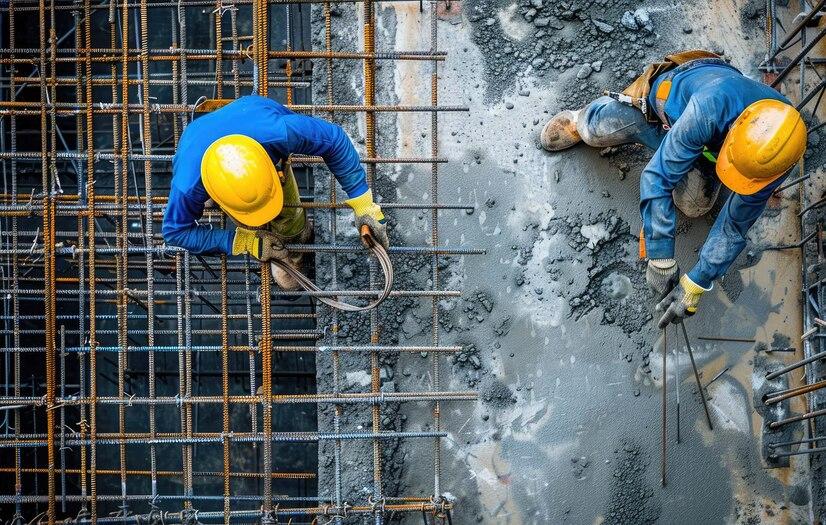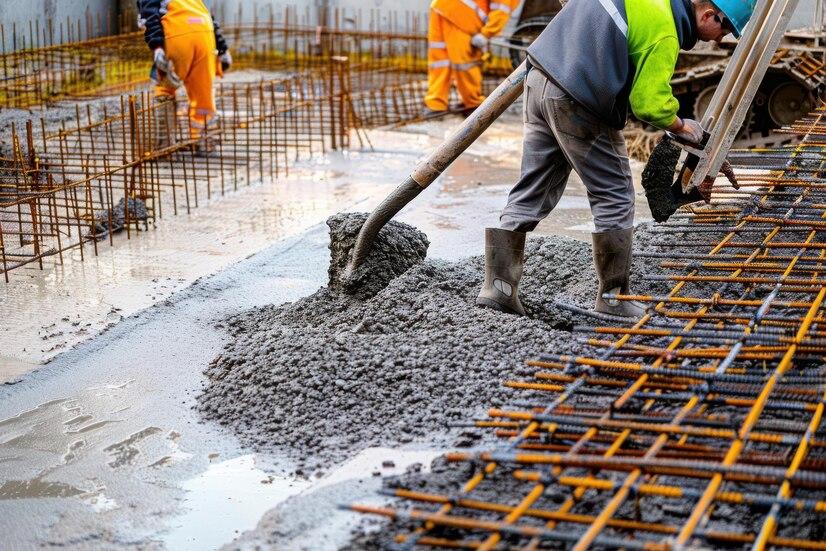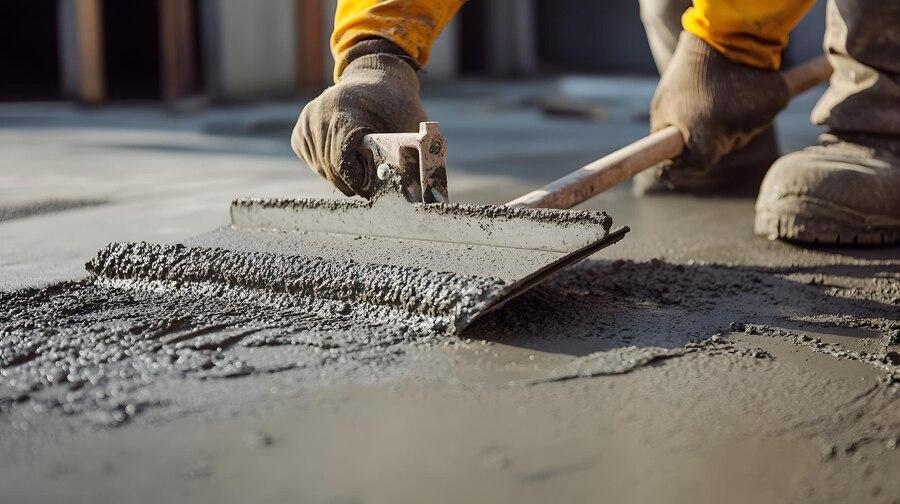



Table of Contents
- Introduction
- What is Reinforced Concrete (RCC)?
- Components of RCC
- Advantages of RCC
- Applications in Real Estate
- Construction Process
- Maintenance and Inspection
- Conclusion
- Faq's
Introduction
Reinforced Concrete (RCC) is a construction material that combines concrete and steel reinforcement to enhance the strength and durability of structures. Widely used in the real estate sector, RCC plays a critical role in the construction of buildings, bridges, highways, and various other infrastructure projects.
What is Reinforced Concrete (RCC)?
Reinforced Concrete (RCC) is a construction material that combines the high compressive strength of concrete with the tensile strength of steel reinforcement. This composite material is designed to withstand a variety of structural stresses and is widely utilized in construction projects, including residential, commercial, and infrastructure developments. RCC consists of concrete a mixture of cement, aggregates, and water enhanced with steel bars or mesh, which provide tensile strength. This combination allows RCC to effectively handle both compressive and tensile forces, making it suitable for building foundations, structural frameworks, and infrastructure like bridges and highways. The construction process involves designing RCC elements, setting up formwork, placing the steel reinforcement, pouring and curing the concrete, and finally removing the formwork. RCC's advantages include its strength, durability, versatility, and fire resistance, making it a preferred material in modern construction for its ability to support heavy loads and endure various environmental conditions. Concrete
Concrete
Components of RCC
Reinforced Concrete (RCC) comprises two main components that work together to provide enhanced structural strength and durability: concrete and steel reinforcement.
Concrete:
Composition: Concrete is made from a mixture of cement, aggregates (such as sand and gravel), and water. The cement acts as a binding agent, while the aggregates provide bulk and strength.
Properties: Concrete has excellent compressive strength, which allows it to bear significant pressure without collapsing. However, concrete is relatively weak in tension (stretching), which is why reinforcement is necessary.
Steel Reinforcement:
Types: Steel reinforcement typically comes in the form of bars (rebar) or mesh. Rebar is commonly used in various diameters and grades, while mesh provides additional reinforcement and is often used in slabs.
Properties: Steel reinforcement is strong in tension and complements the concrete's compressive strength. It helps absorb tensile forces, preventing cracks and improving the overall structural integrity of the concrete. The bond between the steel and concrete is crucial for the effectiveness of RCC. Components of RCC
Components of RCC
Advantages of RCC
Strength and Durability: RCC structures are known for their high strength and durability, making them suitable for buildings exposed to heavy loads and adverse environmental conditions.
Versatility: It can be molded into various shapes and sizes, allowing for flexibility in architectural design.
Fire Resistance: Concrete provides excellent fire resistance, which enhances the safety of structures.
Cost-Effectiveness: While the initial cost may be higher due to the need for steel reinforcement, RCC can be cost-effective in the long term due to its durability and low maintenance requirements. Advantages Of RCC
Advantages Of RCC
Applications in Real Estate
Building Foundations: RCC is commonly used for building foundations, which must support the entire structure's weight.
Structural Framework: It forms the structural framework of buildings, including columns, beams, and slabs.
Retaining Walls: Used in retaining walls to hold back soil and support landscaping features.
Bridges and Overpasses: Essential for constructing bridges, overpasses, and other infrastructure elements.
Construction Process
Design: Structural engineers design RCC elements based on load requirements, building codes, and architectural plans.
Formwork: Temporary molds (formwork) are constructed to shape the concrete as it sets.
Reinforcement: Steel bars or mesh are placed within the formwork according to the design specifications.
Pouring Concrete: Concrete is poured into the formwork, covering the reinforcement.
Curing: The concrete is allowed to cure and gain strength, which typically takes several days to weeks.
Removal of Formwork: Once the concrete has set and reached sufficient strength, the formwork is removed.
Maintenance and Inspection
Maintenance and inspection are crucial for ensuring the longevity and safety of Reinforced Concrete (RCC) structures. Regular checks and proactive care help address potential issues before they escalate and preserve the structural integrity of the concrete.
Regular Inspection
Visual Inspections: Routine visual inspections are essential for identifying obvious signs of damage such as cracks, spalling, or discoloration. Inspectors should examine all visible surfaces of the structure, including walls, floors, and ceilings.
Detailed Assessments: For more comprehensive evaluations, detailed assessments using specialized equipment and techniques, such as ultrasonic testing, impact echo testing, and ground-penetrating radar, may be conducted. These methods help detect internal issues like rebar corrosion or voids within the concrete.
Common Issues and Their Causes
Cracking: Cracks in RCC structures can result from various factors including thermal expansion, shrinkage, or overload. Cracking can compromise the integrity of the structure and may require repair.
Spalling: Spalling occurs when the concrete surface begins to chip or flake off. It is often caused by the corrosion of the steel reinforcement beneath the surface. This corrosion can be accelerated by moisture and chloride exposure.
Corrosion of Reinforcement: Exposure to moisture, chemicals, and environmental conditions can lead to the corrosion of steel reinforcement. Corrosion can expand and cause cracking and spalling of the surrounding concrete.
Maintenance Practices
Crack Repair: Cracks should be repaired promptly to prevent water ingress and further deterioration. Repair methods include epoxy injections for small cracks or patching for larger ones.
Concrete Sealing: Applying a sealant to concrete surfaces can help protect against moisture penetration and environmental damage. Regular sealing can extend the lifespan of the concrete.
Reinforcement Protection: If corrosion is detected, it is essential to address it by cleaning and re-coating the steel reinforcement or replacing it if severely damaged. Additional protective coatings or corrosion inhibitors may also be applied.
Cleaning and Debris Removal: Keeping concrete surfaces clean and free from debris helps prevent deterioration and allows for better inspection and maintenance.
Documentation and Record Keeping
Inspection Reports: Detailed reports of inspections should be maintained, including observations, findings, and any actions taken. This documentation helps track the condition of the structure over time and informs future maintenance needs.
Maintenance Logs: Keeping logs of all maintenance activities, repairs, and updates ensures a comprehensive record of the care provided to the structure. This information is valuable for planning and budgeting future maintenance efforts.
Professional Assessment
Consultation with Experts: For significant issues or complex problems, consulting with structural engineers or concrete specialists is advisable. They can provide expert analysis and recommend appropriate repair strategies.
Conclusion
Reinforced Concrete (RCC) is a fundamental material in the construction industry, particularly in real estate, due to its strength, durability, and versatility. Understanding its properties and applications is crucial for effective design, construction, and maintenance of various real estate projects.
explore further
Latest from Encyclopedia
More from Interactions
Resources
Dwello, for every home buyer, is a way to go from 'I feel' to 'I know', at no extra cost.




